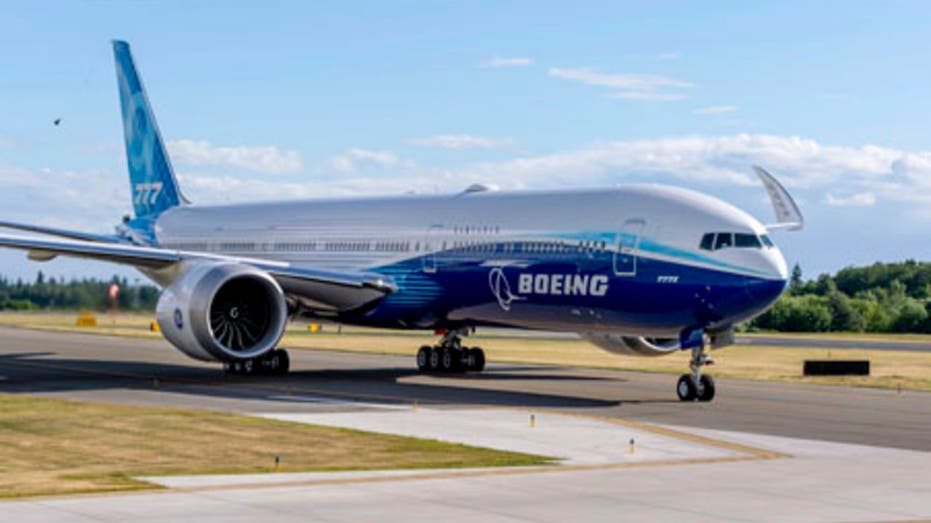Boeing cuts long-range industrywide outlook for planes
Boeing released its forecast ahead of the start of the Farnborough International Airshow where manufacturers book orders
Boeing has cut its industrywide forecast for airplanes over the next 20 years, but expects deliveries to be stable, excluding one specific market.
That market is Russia, which is taken out of the equation because of the war in Ukraine.
There is uncertainty around when manufacturers could again sell planes to Russian carriers.
US AUTHORITIES OBTAIN WARRANT TO SEIZE BOEING, GULFSTREAM JETS TIED TO RUSSIAN OLIGARCH
Boeing's new projection is that airlines worldwide will need 41,170 new airplanes over 20 years with half of the deliveries for replacement aircraft, and with single-aisle aircraft accounting for about 75% of planes.

Boeing 777X (Boeing) (Boeing)
The forecast is down from its previous 20-year-forecast of 43,610 deliveries.
The new estimate excludes the Russian market and its projection of 1,540 planes.
BOEING'S STARLINER RETURNS FROM SPACE STATION
Boeing's new market outlook was released on Sunday ahead of the Farnborough Airshow.

Signage for Boeing is seen on a trade pavilion at Farnborough International Airshow in Farnborough, Britain. (REUTERS/Toby Melville/File Photo / Reuters Photos)
The Farnborough International Airshow, is an industry trade show for the aerospace and defense industries, where manufacturers demonstrate their aircraft in an attempt to book orders.
MAJOR US DEFENSE CONTRACTORS MAINTAIN CHINA TIES DESPITE INCREASING TENSIONS
Boeing did however increase its 10-year demand forecast slightly to 19,575 airplane deliveries, excluding the Russian market.

Boeing's facility in North Charleston, S.C. (AP Photo/Mic Smith, File / AP Newsroom)
Boeing sees strong near-term demand for aircraft despite the risk of a recession.
| Ticker | Security | Last | Change | Change % |
|---|---|---|---|---|
| BA | THE BOEING CO. | 247.68 | -0.06 | -0.02% |
Still, Boeing projects the global airline fleet will nearly double by 2041 as it sees a worldwide aviation demand COVID-19 recovery by early 2024.
Reuters contributed to this report.





















